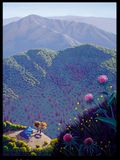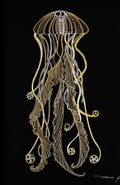Free Expression-Art



Locke McCorkle on Druid Heights
In this oral history, Locke McCorkle reminisces about Druid Heights and many of the people associated with the legendary bohemian community. Locke recounts first visiting Druid Heights in the early 1950s and his subsequent involvement in building some of the structures there. He conjectures that the community received its evocative name from one of its early residents, the poet Elsa Gidlow. In addition to Elsa, Locke discusses various other people associated with the Druid Heights community, including its founder, the architect Roger Somers, his wife Mary Somers, and his teacher and friend Alan Watts. The oral history concludes with Locke envisioning the physical remains of Druid Heights returning to nature.
Elizabeth Cotten and Rhiannon Giddens
"At the age of 11 (a few sources say 12), Elizabeth “Libba” Cotten wrote a song called ”Freight Train,” which would go on to become a folk classic. Yet she didn’t reap the benefits of her lifelong talent until she was 66 years old and a great-grandmother. Rhiannon Giddens was born Feb. 21, 1977, in Greensboro, North Carolina. A recipient of the prestigious MacArthur Fellowship in 2017, she tells her own story in this short video, including her desire to reclaim the banjo as a key instrument in African American music history."
Yup’ik Masks (Photo Diary)
Native American Net Roots 11/20/2019
For the Central Alaska Yup’ik Eskimo, spirituality was focused largely on the need to secure food for hunting. As with other animistic hunting peoples, animals were felt to have souls which would be reincarnated. Thus, rituals sought to appease the soul of the animal so that it would give itself to the Yup’ik hunters who needed its meat.
Today, many museums consider Yup’ik masks to be works of art. Shown below are some of the Yup’ik masks which have been displayed in the Portland Art Museum and in the Maryhill Museum of Art.
Zombie flu: How the 1919 influenza pandemic fueled the rise of the living dead
In his story “Herbert West: Reanimator,” for example, Lovecraft creates a ghoulish doctor intent on reanimating newly dead corpses. A pandemic arrives that offers him fresh specimens – and that echoes the flu scenes of mass graves, overworked doctors and piles of bodies. When the head doctor of the hospital dies in the outbreak, Dr. West reanimates him, producing a proto-zombie figure that escapes to wreak havoc on the town. The living dead doctor lurches from house to house, ravaging bodies and spreading destruction, a monstrous, visible version of what the flu virus had done worldwide.
The first fairytales were feminist critiques of patriarchy. We need to revive their legacy
But this story is a myth. Fairytales were invented by the blue blood and pomaded sweat of a coterie of 17th century French female writers known as the conteuses, or storytellers......In the closing years of Louis XIV’s reign, French society had become dangerously religious and conservative. Prominent clerics argued for the banning of plays at Versailles, and art forms such as female-authored novels suffered increasing criticism.
